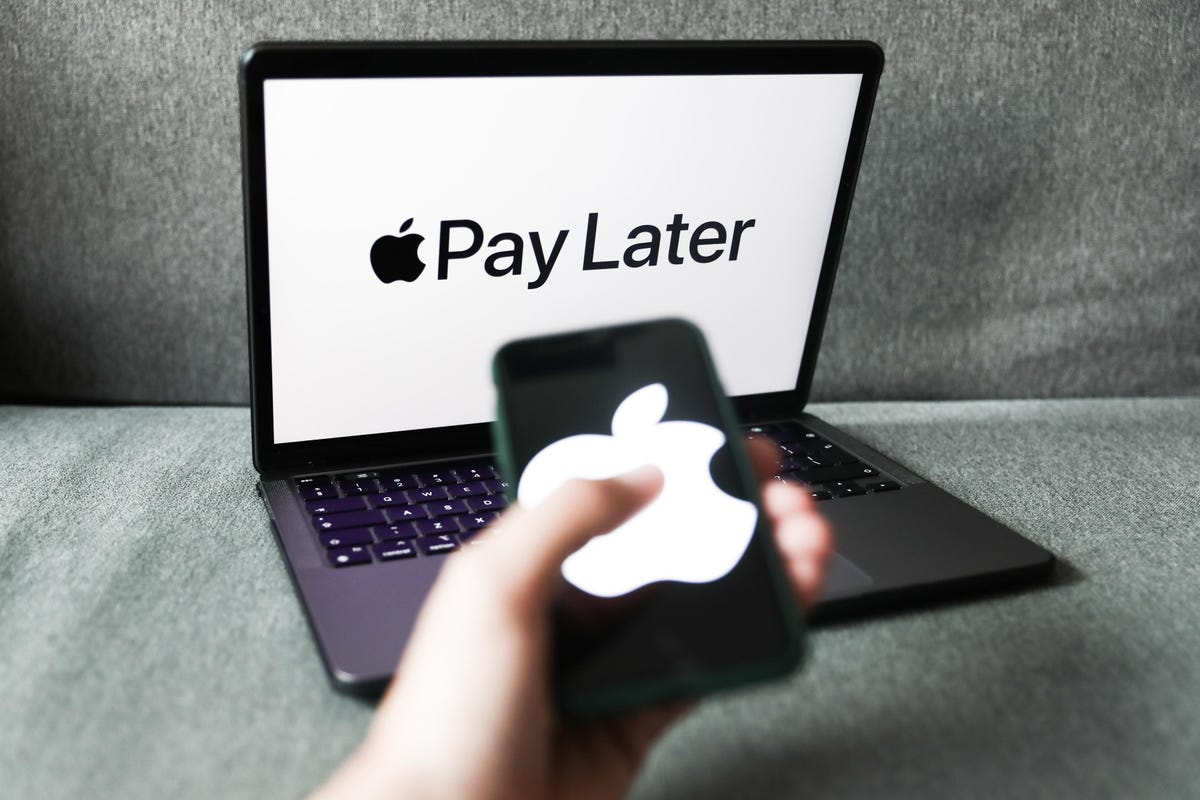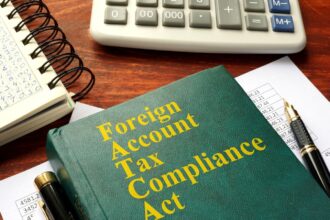Apple’s Buy Now, Pay Later Plan Launches, Allowing Users Loans for Purchases
Apple launched Tuesday Apple Pay Later, a buy now, pay later feature that allows users to split purchases into four payments over the course of six weeks. For now, the service will be available only to randomly selected users who will get early access to a prerelease version of Apple Pay Later. Apple plans to offer the feature to all eligible users in the coming months. Apple Pay users will be able to apply for Apple Pay Later loans of $50 to $1,000, which can be used for online and in-app purchases on their iPhone or iPad. [USA Today]
Credit Card Debt Is at Record High as Fed Raises Rates Again
As the Federal Reserve raises interest rates again, credit card debt is already at a record high, and more people are carrying debt month to month. The Fed’s interest rate increases are meant to fight inflation, but they’ve also led to higher annual percentage rates for people with credit card debt, which means they pay more in interest. The Fed announced last Wednesday that it would increase rates another quarter of a point. With inflation still high, people are leaning on their credit cards more for everyday purchases. 46% of people are carrying debt from month to month, up from 39% a year ago, according to Bankrate.com. Data also shows more people are now falling behind on payments. [Associated Press]
Florida Governor Ron DeSantis Introduces State Legislation Banning CBDCs
Florida Governor Ron DeSantis proposed legislation on Monday that would ban central bank digital currencies from the Sunshine State, portraying it as a measure to safeguard Floridians’ financial privacy. The legislation would prohibit in Florida any CBDC that the U.S. Federal Reserve could introduce and any created by a foreign government, outlawing the technology entirely from being used as a form of money within the state. [Decrypt]
What Happens to My Credit Card Account if the Issuing Bank Shuts Down?
In the event of a bank failure, the Federal Deposit Insurance Corporation typically steps in and takes over the institution. The FDIC keeps the operations of the failed bank ongoing, including its credit card business. In the meantime, the regulatory authority would look for a buyer for the failed bank. You should keep up with your bank’s website for any updates on your credit card account. If a buyer emerges, the failed bank’s credit card portfolio would be transferred to the acquiring institution. This buyer would then become the new issuer of your credit card and set the terms of your account. The new issuer might change your interest rate on new transactions, for one, after giving you 45 days’ notice. It could even change the interest rate on your existing balances in certain circumstances, as well as your credit limit after giving you sufficient notice. You might even get a new card under a different brand name. [Yahoo Finance]
CFPB Officially Takes Aim at Credit Card Late Fees
On March 29, the CFPB published a proposed rule in the Federal Register to amend Regulation Z, which implements the Truth in Lending Act, to limit late fees charged on credit card accounts. If adopted, amended Regulation Z would adjust the safe harbor dollar amount for late fees to a flat $8, down from the current safe harbors of $30 for a first violation and $41 for a second violation within six billing cycles. It would also provide that late fee amounts must not exceed 25% of the amount of the required payment deemed late. [Lexology]
Walmart Wants to Buy Back Your Old Electronics Turning Your Junk into Walmart Gift Cards
Walmart has recently launched its Gadgets to Gift Cards program, an innovative way to dispose of used electronic devices that reduces the amount of waste in landfills. If you have old cell phones, tablets, video games, consoles, laptops, GPS devices, MP3 players, and cameras you don’t have any use for, you can trade them in by filling out an online appraisal form. Then, you pack up your items following the directions given to you by the Walmart CExchange program, and ship them away for free. Once your package is received, Walmart will appraise your devices in about two to four weeks, where you will then be paid however much the item is worth. Though they can’t pay you in cash, Walmart offers a Walmart eGift Card that will allow you to use the funds on Walmart.com or on Samsclub.com, if you’re a member. [Cord Cutters News]
Rocket Mortgage Launches a Credit Card to Help You Save For or Pay Off a Home
The new Rocket Visa Signature Card comes with a rewards system that’s hard to decipher at first glance. While advertised as a cash-back card, the card offers 5X Rocket Rewards points on all purchases. The value of your rewards will depend on how you redeem them. Your points are worth 1 cent each when redeeming towards down payment and closing costs with Rocket Mortgage (up to $8,000 in rewards), so you’re essentially earning 5% cash back on all purchases if you use your points this way. Or your points are worth 0.4 cents each when redeeming towards Rocket Mortgage loan principal. In this case you’re effectively earning 2% cash back on all purchases. Your points are worth 0.25 cents each when redeeming towards a statement credit, meaning you’re earning 1.25% cash back on all purchases. [CNBC]
Why and How Are Virtual Cards Disrupting the Finance Industry
Virtual cards to the finance industry are what mobile phones were to the telecommunications industry. In 2022, the virtual card market size was $411 billion. By 2032, this valuation is expected to shoot up to a staggering $1.3 trillion. Virtual cards carry the potential to change the way you spend. Here are some reasons why. Transacting using virtual cards is not only faster and seamless but also secure and convenient. Virtual cards are widely accepted: over 39% of businesses in the US use virtual cards to make B2B payments. Virtual cards are environmentally friendly. [Finance Feeds]
Buy Now, Pay Later Could Become a Multi-Trillion Dollar Business
The market for buy now, pay later, an alternative to credit cards whose popularity exploded during the pandemic, could surge to nearly $3.7 trillion by 2030 as more consumers take advantage of ways to pay for goods and services in interest-free installments instead of lump sums. That’s according to Straits Research, which puts the market at $132 billion now. As of last year, 360 million people around the world used BNPL, a number that could almost triple to 900 million by 2027, according to Juniper Research. While growth projections vary widely, BNPL is expected to record a compound annual growth rate between 20% and 45% through the end of the decade. PayPal dominates the market with four times as many users as the next largest BNPL provider. [Investopedia]
Cryptocurrency Outlook Picks Up Amid Bank Crisis
After a roller-coaster year filled with arrests, speculation, scams, bankruptcies and billions in value lost, cryptocurrency market experts could hardly wait for boring times. Then Silicon Valley Bank hit the skids, and financial markets were thrown out of whack. For cryptocurrencies, particularly bitcoin and ethereum, the 2023 bank panic has been a net positive. The bitcoin price, already up strongly to start the year, recently moved to around $28,000. That’s its highest level since June, before Sam Bankman-Fried’s FTX exchange started to melt down. Ethereum is trading above $1,700 and near September highs. [Investor’s Business Daily]
Credit Card Spending Topped $13 Trillion Last Year
Global spending on credit cards last year rose to more than $13 trillion across in-store and online checkout, according to an annual report from Fidelity National Information Services. FIS attributed the rise to more sources of credit, including digital wallets loaded with credit cards, buy now, pay later options and point-of-sale financing offered by fintechs, banks and merchants. Facilitated by real-time payment rails, account-to-account payments are becoming a more popular payment method globally. Global account-to-account transaction value was about $525 billion last year. [Payments Dive]
Yes, You Can Put Your Taxes on a Credit Card
It turns out it is possible to put your federal tax bill on a rewards credit card, reaping hefty rewards or, if it’s what you need, gaining extra time to pay off your bill. But there are some big caveats and risks. Among the biggest hurdles: Putting your federal taxes on plastic isn’t free: the third-party processors that the IRS uses all charge a fee for the service. Fees range from 1.85% to 1.98%. Like anything else you charge to your credit card, you will incur interest charges at your purchase APR if you carry a balance from month to month. Most credit card issuers report your credit card balances and the amount of available credit to all three major credit bureaus monthly. So having either a large amount of debt or maxing out your credit cards may lower your credit score while those balances are reported. That could ding you if you’re shopping for a top interest rate on a loan, such as a mortgage. [The Wall Street Journal]
Read the full article here










